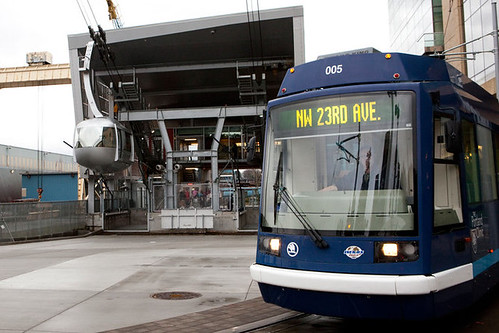Portland as an illustration of the best (planning/infrastructure) and worst (how the hell to fund transit) in transportation planning
Governing Magazine has an article, " Portland Struggles to Remain a Leader in Public Transit," on the conundrum faced by Portland, Oregon, poster child for great transportation planning, coordinated land use planning, vision, etc. in the United States, but how the transit system is facing massive service cuts and fare increases because the system's funding sources (primarily a withholding tax on wage income) have diminished significantly during the recession, to the point where the city's heralded fareless square--free transit downtown--is facing extinction.
Labels: transit, transportation planning




0 Comments:
Post a Comment
<< Home